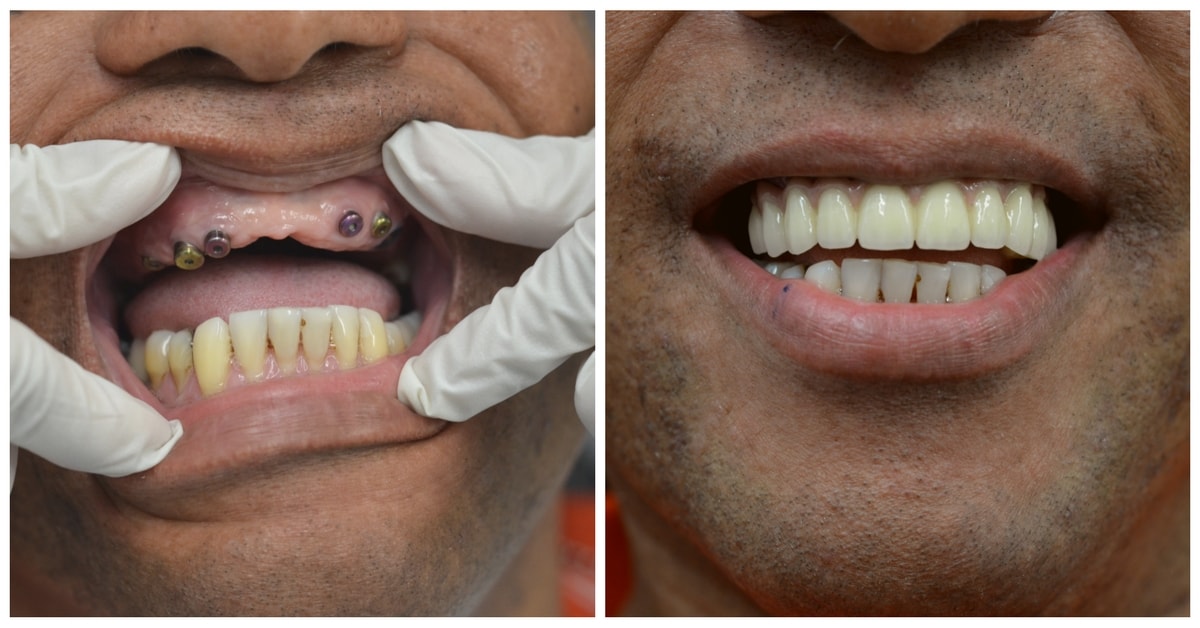Getting The Dental Implants To Work
Getting The Dental Implants To Work
Blog Article
The Main Principles Of Dental Implants
Table of ContentsWhat Does Dental Implants Do?Fascination About Dental ImplantsDental Implants Fundamentals ExplainedThe Only Guide for Dental Implants
are clinical gadgets surgically dental implanted into the jaw to recover a person's capacity to chew or their look. They supply assistance for synthetic (fake) teeth, such as crowns, bridges, or dentures. When a tooth is lost as a result of injury or illness, an individual can experience complications such as rapid bone loss, malfunctioning speech, or adjustments to eating patterns that result in pain.
Framework of The Oral Implant System choosing dental implants, talk to your dental supplier about the possible advantages and risks, and whether you are a prospect for the treatment. Things to think about: Your overall wellness is a vital factor in determining whether you are a great candidate for dental implants, how much time it will take to heal, and for how long the dental implant may remain in area.
Cigarette smoking might influence the healing procedure and decrease the lasting success of the dental implant. The recovery process for the dental implant body may take several months or longer, throughout which time you usually have a short-term joint in location of the tooth. the dental implant treatment: Very carefully comply with the dental health directions given to you by your dental provider.
The Single Strategy To Use For Dental Implants
Implant failure can cause the need for one more surgical treatment to deal with or change the dental implant system. Brings back the capacity to eat Recovers cosmetic appearance Helps keep the jawbone from diminishing because of bone loss Maintains the wellness of the surrounding bone and periodontals Aids maintain adjacent (close-by) teeth secure Improves quality of life Damage to bordering all-natural teeth throughout implant placement Injury to the surrounding tissues during surgical procedure, such as sinus opening Injury throughout surgical treatment (for instance, crack of bordering jawbone) Poor feature, such as feeling like the teeth do not attack with each other usually A sensation that the tooth is loose or turning in location resulting from a joint screw loosening Implant body failing (looseness of the implant body) as a result of systemic infection, which may be more probable in people with unrestrained diabetes due to local infection in bone and gums supporting the implant body as a result of delayed healing, which may be a lot more likely in patients that smoke Problem cleansing the gums around the implant, leading to bad dental hygiene Unattended gum condition Post-surgical check it out numbness because of nerve impingement or damage Constantly alert health and wellness care carriers and imaging service technicians that you have oral implants before any kind of magnetic vibration imaging (MRI) or x-ray procedures.
FDA is not familiar with any kind of negative events reported for MRI or x-ray treatments with oral implants. Oral implants systems are usually made from products that comply with international agreement requirements of the International Company for Standardization (ISO) or ASTM International. These standards have details of what makes a safe material.
Other materials such as gold alloys, cobalt-based alloys, titanium alloys, or ceramic materials are in some cases made use of. The safety accounts of these products are well-known. Oral implant systems are evaluated according to global consensus requirements. Biocompatibility testing, to show that bodily call with the device does not trigger difficulties like irritability or allergy, belongs to the examination that aids ensure the materials in the oral implant system are risk-free and do not cause negative results when dental implanted in people.

4 Simple Techniques For Dental Implants
Some people are not eligible for oral implant surgery. It is for oral specialists to operate individuals with: intense illnessuncontrollable metabolic diseasebone or soft tissue disease or infectionIf these issues are solved, an individual can have the surgical procedure. Dental Implants. In, dental specialists avoid operating individuals with: If individuals with any one of the above undergo dental implant surgical procedure, there is a higher threat of the implant stopping working
Some individuals have a jawbone irregularity that stops sufficient bone for a dental implant from developing. The surgeon will certainly then utilize a bone this website or bone alternative to repair and develop up the area.
Oral dental implant surgical treatment is a personalized process. It's not the exact same for everybody. The following provides a basic review of what you can expect your dental professional, dental cosmetic surgeon, periodontist or prosthodontist to do: Place the implant surgically. Give you time to recover. Connect the blog post and last crown, bridge or denture.
Next, your specialist will thoroughly place the dental implant right into your jaw. Your surgeon will certainly reposition your gum tissues and close the laceration with stitches (Dental Implants). If your dental implant is near the front of your mouth, your dental expert will certainly make a short-term tooth for you to wear till you recover. That method, you won't have a gap in your smile while you recover.
More About Dental Implants
Throughout the recovery stage, your jawbone must fuse to the oral implant. This procedure can take anywhere from three to nine months.
As soon as your dental implant heals, your dental practitioner can attach the abutment (small adapter blog post) and your final remediation (crown, bridge or denture). This normally takes regarding one hour click over here to complete and might call for a second small surgical treatment. You should not really feel any kind of pain throughout your dental implant treatment due to the fact that your company will certainly make use of medicine to numb your gums.
Report this page